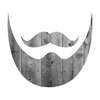Hi!
I'm using LaserWorks with the next settings to cut acrylic: Speed: 10, Power 70
The edges of my item are jagged, and I was changing a little the speeds and power used with no better results.
I read in a thread the next recommendations for another laser machine: ".....Run your vector cut at 10 speed, 100 power, 500 frequency."
I'm unable to find "frequency" in LaserWorks. What's missing here?
Marco




 Reply With Quote
Reply With Quote

 Oh wait its a 3D Printer my bad LOL
Oh wait its a 3D Printer my bad LOL 

 ) - as noted, "frequency" refers to reps in a unit of TIME (typically)... But an RF laser's firing frequency is dictated in SPACE. This means the laser's actual pulsing frequency in a given amount of time is always changing with machine speed, pulsing per a given distance remains constant regardless of machine speed... Conversely, a fiber laser's frequency is just the opposite, the laser's frequency in given amount of time never changes, regardless of speed, so changing the machine speed changes the number of pulses per a given distance; faster speed = less pulses per inch, slower = more...
) - as noted, "frequency" refers to reps in a unit of TIME (typically)... But an RF laser's firing frequency is dictated in SPACE. This means the laser's actual pulsing frequency in a given amount of time is always changing with machine speed, pulsing per a given distance remains constant regardless of machine speed... Conversely, a fiber laser's frequency is just the opposite, the laser's frequency in given amount of time never changes, regardless of speed, so changing the machine speed changes the number of pulses per a given distance; faster speed = less pulses per inch, slower = more...

